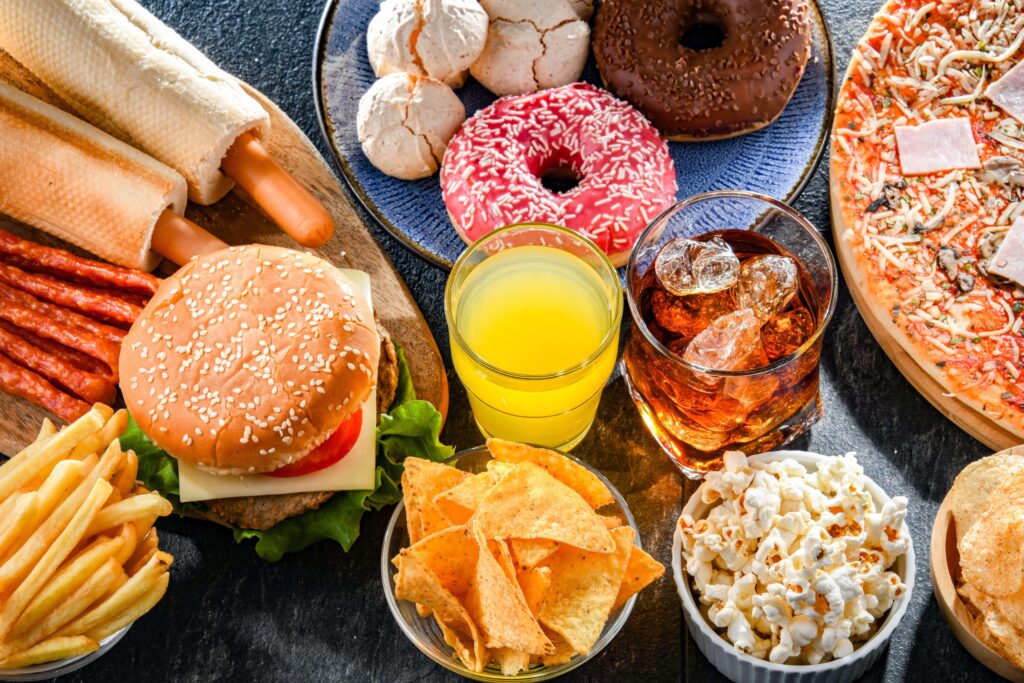Rising Trend of Ultra-Processed Foods in American Grocery Stores: Implications for Health
A recent study has unveiled a concerning trend in the American diet: nearly 50% of all grocery purchases are now comprised of ultra-processed foods. This shift raises serious public health alarms as it reflects an increasing dependence on convenience-oriented, industrially produced items that are often packed with additives, sugars, and unhealthy fats. Nutrition specialists caution about the potential long-term repercussions of these eating habits—ranging from obesity to chronic illnesses—prompting urgent conversations among policymakers, health advocates, and consumers. The ramifications extend beyond individual well-being; this rise in ultra-processed food consumption highlights an urgent need for renewed emphasis on dietary quality and public health initiatives aimed at promoting healthier eating practices nationwide.
Impact of Ultra-Processed Foods on American Dietary Habits
Recent research indicates that ultra-processed foods—including sugary treats, ready-to-eat meals, and soft drinks—now represent almost half of all grocery expenditures in the United States. This alarming statistic is raising significant concerns among healthcare professionals who warn that diets high in these products correlate with various health complications such as obesity, diabetes, and heart disease. The convenience offered by these items often overshadows their nutritional shortcomings, leading consumers to favor taste and ease over health benefits.
The increase in consumption can be attributed to multiple factors including aggressive advertising tactics, the fast-paced lifestyles many Americans lead today, and the lower prices associated with processed goods compared to fresh produce. As families look for quick meal options amidst their busy schedules, they inadvertently perpetuate a cycle of poor dietary choices. To clarify this issue further, consider the following table which outlines common ultra-processed foods alongside their related health risks:
| Ultra-Processed Food | Health Risks |
|---|---|
| Sugary Snacks (Chips & Cookies) | High levels of sugar and unhealthy fats |
| Microwave Meals | Excess sodium content with minimal nutrients |
| Sugary Drinks | Tied to obesity rates and metabolic disorders |
Health Concerns Linked to High Intake of Ultra-Processed Foods
The surge in ultra-processed food consumption is associated with numerous alarming health risks that have become increasingly concerning for public health officials. Research suggests that these products frequently contain additives along with elevated levels of sugar, salt, and unhealthy fats—all contributing factors to chronic conditions such as obesity type 2 diabetes cardiovascular diseases even certain cancers. Regularly consuming these items transcends mere dietary preference; it poses a risk factor making individuals more vulnerable to severe long-term health issues.
To illustrate further how high intake correlates with adverse effects here are some commonly observed consequences:
- Obesity: Increased caloric intake coupled with low nutritional value.
- Syndrome X: Greater waist circumference along with insulin resistance.
- Cardiovascular Issues: Heightened cholesterol levels alongside increased blood pressure.
- Digestive Problems: Poor gut microbiome due lack fiber content.
- Cancer Risk Factors:
Tips for Healthier Grocery Shopping Amidst Processed Options
Navigating grocery stores increasingly filled with ultra-processed options requires adopting mindful shopping strategies prioritizing nutrition without sacrificing convenience.
The following actionable tips can help you make better choices while shopping:
- Select Carefully: strong > Get acquainted ingredient lists focusing on products featuring minimal recognizable ingredients.< / li >< li >< strong > Stick To The Edges: strong > Concentrate your shopping efforts around store perimeters where fresh produce meats dairy typically reside rather than central aisles filled processed goods.< / li >< li >< strong > Meal Planning: strong > Develop weekly meal plans guiding your purchases helping avoid impulse buys ensuring healthier selections stocked up at home.< / li >< li >< strong > Opt For Whole Foods: strong > Choose whole grains nuts fresh fruits vegetables providing more nutrients less added sugars salts compared processed alternatives.< / li > ul >
Apart from practical tips understanding marketing implications can enhance informed decisions while shopping:
Consider These Points: p >
Marketing Strategies< / th > Consumer Awareness< / th >
< / tr >Vibrant Packaging< / td > Avoid being influenced by attractive designs focus instead nutritional information< / td > tr > Health Claims< / td > Critically assess claims like “low-fat” which may conceal high sugar sodium contents< / td > tr > Discount Offers< / td > Determine whether savings compromise overall nutritional objectives< / td > tr > Looking Ahead: A Call for Action Towards Healthier Eating Habits
The ongoing prevalence surrounding ultra-processeds continues rising now accounting nearly half total grocery sales across America cannot be overstated regarding its implications public welfare experts caution growing reliance upon sugary chemically-enhanced offerings could lead myriad chronic ailments including obesity diabetes cardiovascular disease With consumers increasingly valuing convenience over quality challenges ahead remain complex Addressing balance between dietary habits encouraging improved food selections necessitates coordinated efforts from policymakers healthcare providers everyday shoppers alike As society confronts pressing issues understanding impact our culinary choices has never been more crucial Urgent need exists raise awareness proactive measures promote healthier eating patterns safeguarding future generations’ well-being remains paramount.
